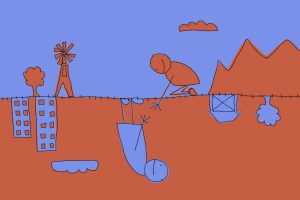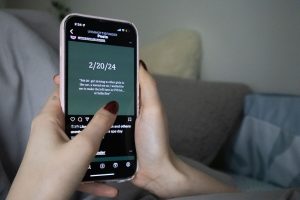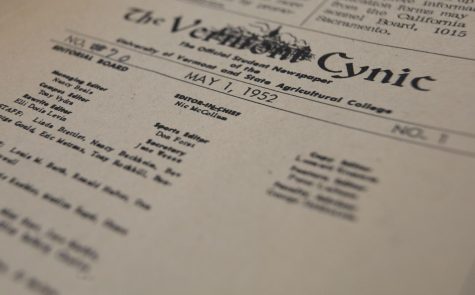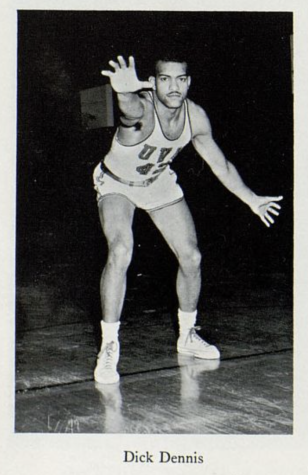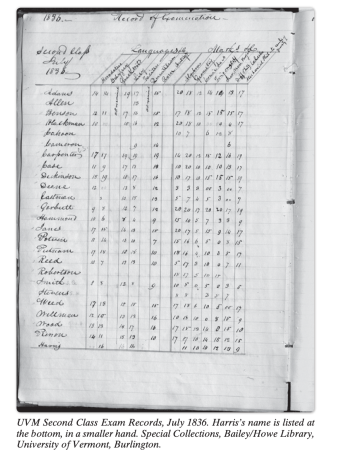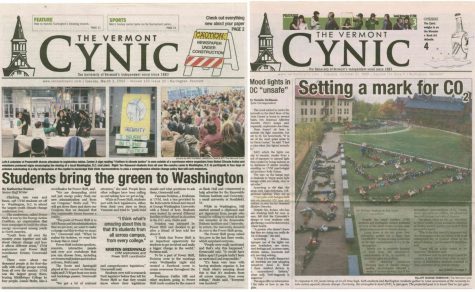Artists transform trash into art
September 8, 2011
Where many have seen only garbage, seven Vermont artists saw raw materials for artistic expression.
The walls of Winooski’s Block Gallery were adorned with artwork made from recycled and repurposed materials.
The exhibit, called “Upcycle Vermont,” incorporated materials ranging from old windows to McDonald’s wrappers to military uniforms.
“I’ve always been drawn to stuff people call junk,” Patricia Morey, whose work was featured in the exhibit, said.
Morey’s pieces included a mermaid made of “salvaged wood, tin roofing from a collapsed 150-year-old Vermont barn, salvaged paint, stain, nails and gold leaf paint,” according to a sign next to the piece.
“If I can create a piece that’s 100 percent recycled, then I’m happy,” Morey said. “I try to use everything that was going to be trash.”
Talking to, or reading the statements of, a few of the artists featured in the exhibit, it became clear that working with discarded materials is not a whim or a gimmick.
Artist John Turner made paper out of old military uniforms, which he used as the materials for his artwork.
Turner wasn’t present at the opening, but a statement posted next to his work suggested that he experienced a catharsis from repurposing military uniforms for artistic expression.
“I truly believe that if we take the time to stare down what has once tormented us and embrace it, we can move forward with a healthier and more positive lifestyle,” the statement said.
Artist Anne Cummings also expressed feeling as if she was righting a wrong by using recycled materials, although in her own way.
“I started using recycled materials because I felt like … I was just creating work out of things I had to go out and buy,” Cummings said. “[Using recycled materials] has made me feel better as an artist.”
Cummings’ artwork in the show included collages made of food and beverage packaging waste, depicting products the that the waste once contained.
Cummings was inspired to make the pieces upon noticing a lot of food-related garbage while collecting materials for another project, she said. With the local food movement in mind, Cummings decided to make something of the wrappers and containers, she said.
In one of Cummings pieces, a scene of chickens was made out of fast food wrappers. Another, titled “Beer Box Blight,” depicted beer bottles, collaged from waste that might be found in any college student’s recycling bin.
On the wall opposite Cummings’ art were Stephanie Larsen’s reverse glass paintings, made from old windows.
“[Reverse glass painting is] an ancient art from China. It’s thousands of years old,” Larsen said. “It’s the history of it that [I like].”
Despite the origins of reverse glass painting, Vermont was present in Larsen’s work. One of her pieces depicts a cow with an “802” tag on its ear.
Indeed, from Larsen’s “802” cow to Morey’s use of scraps from falling-down Vermont barns to Cummings’ nod to the local food movement, there was a Vermont vibe to much of the work in the exhibit.
This was not surprising, as the exhibit was put together with location in mind.
“We ran an ad in Seven Days for a recycled Vermont show,” Block Gallery owner Lorelei Harris said.





